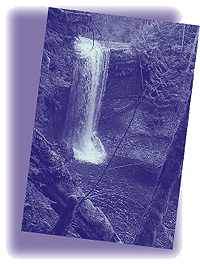Environmental Protection
All levels of government are under pressure to respond to demands of growth and development. Having adequate knowledge of the locations and values of sensitive environmental resources is vital for making good development decisions.

Environmentally Sensitive Areas Atlas
The Environmentally Sensitive Areas (ESA) Atlas was developed in partnership with the Regional District of Nanaimo (RDN), Ministry of Environment, Lands, and Parks (MELP), Canadian Wildlife Service (CWS) and the Department of Fisheries and Oceans (DFO). The Atlas is a computer-generated tool that integrates property boundaries, land parcels, and road networks with the location of environmentally sensitive areas. The information contained in the Atlas makes it easier for agencies and individuals to see whether a piece of property is considered to be environmentally sensitive or contains any of these features.The Environmentally Sensitive Areas in the Atlas reflect known or mapped watercourses and sensitive ecosystems within the regional district, The most recent update to the Atlas was with information from the 1998 and 2004 Provincial Sensitive Ecosystem Inventory (SEI). The SEI identifies and maps rare and fragile ecosystems for a given area based on aerial photography and field confirmation. Click here for more information on the SEI.
The Atlas can be viewed on RDN MAP
Development Permit Areas for the protection of the environment and conservation
The Local Government Act allows local governments to designate Development Permit Areas and guidelines in Official Community Plans for protection of the natural environment, its ecosystems and biological diversity and the protection of development from hazardous conditions. Local governments may also use development permits to establish objectives to promote energy and water conservation and promote the reduction of greenhouse gas emissions.Each of the seven Official Community Plans (OCP) includes sections identifying areas where development permits are required prior to the commencement of development. The development permit is issued in keeping with the various guidelines laid out in the OCP. Please click on 'Official Community Plans' to view the Development Permit Areas in each OCP.
Many development permit areas now have guidelines to protect groundwater. In 2011 the Yellow Point Aquifer Protection Development Permit Area was included in the Electoral Area 'A' OCP to help protect and conserve water in the vulnerable Yellow Point aquifer. The development permit area establishes conditions to assess the impact development will have on groundwater and ensure water conservation through rainwater collection. Click Here for an overview of the Yellow Point Aquifer Protection Development Permit Area.
Contact the RDN's Planning Department for more information.
Phone: 250-390-6510 | Fax: 250-390-7511 | E-mail: [email protected]
